Table of Contents
The Dell XPS 13 has been my go-to travel laptop for the last 6 years, so you can say I have a soft spot for this lineup. It’s not just me, though, it has topped many reviews and recommendations lists since Dell first released the modern XPS 13 ultrabook design back in 2015.
Over the years, the XPS 13 has been updated multiple times, both in a positive way by becoming smaller and slimmer and offering improved screens and hardware, and in a negative way by dumping the connectivity for USB-C only, much like many of the other modern ultraportables.
The 2022 XPS 13 9320 is a much bolder update than the previous generations, though, with a unique and potentially questionable set of inputs, plus the expected bump in internal specs, an updated thermal design, an OLED screen option, updated audio, and a higher-capacity battery than on the 2021 XPS 13 9310 and 2020 XPS 9300 series.
This article is a first look at this 2022 XPS 13 pointing out the important changes, and we’ll further dig in in our review once we get our hands on a finalized unit.
Update (June 21st) – The XPS 13 Plus is available in stores as of right now. Our detailed review of the XPS 13 9320 series is available here.
Update: Here are our thoughts on the updated Dell XPS models launched in 2024, the lightweight Dell XPS 13 9340, the compact Dell XPS 14 9440, and the new mainstream Dell XPS 16 9640.
We’ll keep you updated, and in the meantime, you’ll be able to find out more about the Intel Core P hardware inside this laptop from our other ultrabook reviews here on the site.
2022 XPS 13 Plus 9320 specs sheet, vs XPS 13 9310
| Dell XPS 13 Plus 9320 (early-2022) | Dell XPS 13 9310 (early-2021) | |
| Screen | 13.4 inch, 16:10, FHD+ 1920 x 1200 px resolution, IPS, anti-glare, non-touch, 500 nits, 100% sRGB 13.4 inch, 16:10, FHD+ 1920 x 1200 px resolution, IPS, touch, 500 nits, 100% sRGB 13.4 inch, 16:10, 3.5K 3456 x 2160 px resolution, OLED, touch, 400 nits, HDR 500, 100% DCI-P3 13.4 inch, 16:10, 4K UHD+ 3840 x 2400 px resolution, IPS, touch, 500 nits, HDR 400, 90% DCI-P3 with edge-to-edge Gorilla Glass 7 on touch panels |
13.4 inch, 16:10, FHD+ 1920 x 1200 px resolution, IPS, anti-glare, non-touch, 500 nits, 100% sRGB 13.4 inch, 16:10, FHD+ 1920 x 1200 px resolution, IPS, touch, 500 nits, 100% sRGB 13.4 inch, 16:10, 4K UHD+ 3840 x 2400 px resolution, IPS, touch, 500 nits, HDR 400, 90% DCI-P3 with edge-to-edge Gorilla Glass 6 on touch panels |
| Processor | 12th gen Intel Alder Lake-P U28, up to Core i7-1280P (14 cores, 20 threads, Turbo to 4.8 GHz) at 28W sustained |
11th gen Intel Tiger Lake Cure U, up to Core i7-1165G7 (4 cores, 8 threads @ 2.8-4.7 GHz) |
| Video | Iris Xe Graphics | Iris Xe Graphics |
| Memory | up to 32GB LPDDR5-5200 (soldered, dual-channel) | up to 32GB LPDDR4x-4266 (soldered, dual-channel) |
| Storage | 1x M.2 80 mm PCIe 4.0 x4 , 256 GB to 2 TB | 1x M.2 80 mm PCIe 3.0 x4, 256 GB to 2 TB |
| Connectivity | Killer WiFi 6E AX1675 WLAN, 2×2, with Bluetooth 5.2 | Killer WiFi 6 AX1650 WLAN, 2×2, with Bluetooth 5.0 |
| Ports | 2x USB-C Thunderbolt 4 | 2x USB-C Thunderbolt 4, 1 MicroSD v4.0, headphone jack |
| Battery | 55 Wh, 60W power adapter (USB Type-C) | 52 Wh, 45W power adapter (USB Type-C) |
| Size | 295 mm or 11.63″(W) x 199 mm or 7.83″(D) x 15.3 mm or .60″(H) | 296 mm or 11.64″(W) x 199 mm or 7.83″(D) x 14.8 mm or .58″(H) |
| Weight | ~1.25 kg / 2.73 lbs (+ power supply) for touch | ~1.2 kg / 2.64 lbs (+230 g power supply) for non-touch ~1.3 gk / 2.8 lbs for touch |
| Extras | top-placed 720p camera with IR, on-key fingerprint sensor with Hello, 4x speakers | top-placed 720p camera with IR, on-key fingerprint sensor with Hello, 2x 2W bottom-firing speakers |
Moving forward, the XPS 13 Plus 9320 completely replaces the previous design used with the XPS 13 9310 and 9300. That means there won’t be any hardware refreshes of the previous chassis.
In the meantime, Dell have released an update of the standard XPS 13 chassis, the XPS 13 9315 mid-2022 model, which is a slight redesign of the previous XPS 9310/9300 models and a more standard approach than this XPS 13 9320.
Design and ergonomics
The XPS 13 is still a premium design entirely made out of CNC aluminum and glass. Dell offers the 2022 XPS 13 9320 model in two color options, a silver/white variant with a white keyboard (called Platinum), and a dark gray model with a black keyboard (called Graphite). Both look spectacular and are excellently crafted – very few other ultrabooks come near the XPS 13 series in terms of craftsmanship and attention to detail.
As far as the size and weight go, the 2022 XPS 13 is nearly identical to the previous generation and overall compact and portable for a 13-inch ultrabook, yet not as lightweight as some of the other options out there. I don’t mind it, I can accept a little more weight in a balanced product that doesn’t compromise on the build, specs, performance, or cooling.
However, I still have some nits with the ergonomics of this XPS 13 series; the screens still only lean back to about 130-140 degrees, and not all the way back to 180. I’ve always found this a limitation on my XPS when using it on the lap or in cramped spaces, and Dell have refused to address it over the years.
And then there’s the fact that the connectivity is USB-C only now, with only a Thunderbolt 4 slot on each side. There’s no longer a microSD card-reader or a 3.5 mm audio jack, as with the previous generations. Heck, not even Apple went as far as removing the audio jack on their MacBook Air. Asus were the only one to dabble with it and took so much heat from reviewers and buyers that they quickly changed their mind and brought the jack back on the more recent updates.
Besides this, there’s also the redesigned interior to consider, with the unique and unexpected keyboard and clickpad. We’ll get to them in the next section.
Inputs
I’ve added a picture of the interior deck of the 2022 XPS 13 next to the 2021 model.
A few details come to mind. First off, the keyboard is entirely different from any other keyboards in the laptop space available right now.
The layout stretches the entire length of the chassis, which leads to unusually large keycaps, but there’s also almost no spacing between the keys. On top of that, the keys have a slightly concave dish shape and only travel 1 mm into the chassis. Finally, Dell ditched the top-row of function keys for a set of dual-functionality capacity zones at the top of the regular keys.
It’s impossible to tell how this completely different implementation will affect the typing experience. On a first glimpse, what comes to mind is the butterfly keyboard on the previous MacBooks, but the keycaps are much larger here and the spacing is narrower. Hopefully, the .3 mm dish on the keycaps offers the tactile feedback and precision that Dell advertise in their release materials. I fear this keyboard might feel shallow and imprecise, but there’s no way to tell without using it for a while. We’re not attending CES in person this year, so look into other previews for more details.
As for the capacitive function keys, they can be switched between regular F and media functionality, with Esc and Delete remaining in place between the two modes. Dell mentions that by opting for this sort of thinner capacitive keys they were able to better use the interior space for an improved thermal module, in order to cope with the updated Intel hardware.
However, the only other past implementations that come close to this one are the Touch Bar in the previous MacBooks and the touchscreen function area in a very old ThinkPad X1 Carbon generation. Both Apple and Lenovo ditched those for a standard row of function keys in the meantime.
The other aspect that stands out is the lack of a distinct clickpad area on the wrist-rest, under the keycaps. And that’s because the entire arm-rest is now a capacitive touchpad area with haptic feedback. In theory, this sounds like a potential winner, you get to click and tap anywhere you want on the arm-rest, without any rattling or clunky clicks. We’ll have to see how this performs in practice, though, and especially how well Dell figured out hand and palm rejection with this sort of design.
All in all, Dell are venturing into murky waters with these inputs on the XPS 13 Plus series. Time will tell if this experiment will be a success or a failure. I’ll need to spend time with the laptop before drawing any conclusions of my own.
Screens and audio
The 2022 XPS 13 Plus implements the same kind of 13.4-inch 16:10 displays previously used with the 2021 model.
That means we’re given the choice of either a matte or a touch FHD+ IPS panel, a touch 4K IPS panel, and a touch 3.5K OLED option with higher contrast and color accuracy than the IPS versions, at 100% DCI-P3. We’re most likely looking at a beautiful Samsung recent-generation OLED option, and based on our experience with other OLED laptops, the only potential concern is how Dell were able to address any potential flickering at lower brightness levels.
Overall, I’m happy to see all these different screen options available for the XPS 13 series, something I wish other manufacturers would also offer on their lineups.
It comes without saying that the bezels around the displays are still minuscule on the XPS 13 Plus, and that there’s still a camera at the top, the same kind of HD model with support for Hello that was implemented on the XPS 13 9310. It does the job, but with rather washed out image quality. There’s also a finger-sensor implemented on this series, in the top-right corner of the keyboard deck.
As a novelty for the 2022 XPS 13, audio is now handled by a quad-speaker system capable of louder volumes and improved quality, according to Dell.
As far as I understand, two of these speakers still fire through the cuts on the laterals, and two fire upwards through the keyboard. This is a much-needed update considering the audio quality of the previous generations and the higher and higher bar set by the competition in recent years.
Hardware, performance, and thermal design
Specs-wise, the Dell XPS 13 Plus 9320 series is built on Intel’s 12th gen AlderLake-P U28 hardware, which is the 28W sub-platform meant for powerful portable devices.
This is paired with Iris Xe graphics, LPDDR5 memory, PCIe 4.0 storage, WiFi 6E+Bluetooth 5.2 connectivity, as well as support for Thunderbolt 4. Everything is soldered on the motherboard, except for the M.2 SSD.
Dell haven’t provided a detailed look at the internal redesign, but have mentioned that they implemented a larger cooling module with higher-capacity fans stretched farther away to the sides, in order to allow for longer and larger heatsinks and radiators. The design still blows the hot air behind the hinge and partially into the screen, with the intakes placed on the laterals, and without open-intake grills on the D-Panel.
Overall, this design allows the AderLake hardware to run at 28-30W of sustained power in demanding loads, and paired with the updated Intel platform, will result in a major improvement in performance over the previous generation, both with everyday multitasking and especially in multi-threaded loads. The XPS 13 is not going to be unique at this, though, as most of the other manufacturers will offer ultraportable series built on Intel U28 and H45 Alder Lake platforms at the beginning of this year.
Dell also mentioned that despite the higher sustained power settings possible with the XPS 13 Plus, the internal/external temperatures and fan noise should not significantly differ from the previous XPS 13 models. That means you should expect the fans to keep at under 40 dB at full blast, but with fairly warm surface temperatures and some high internal peaks. We’ll carefully look into the thermal/acoustic performance in our review.
For now, I’ll also add that Dell were able to slightly bump up the battery size on the 2020 XPS 13 generation, to 55Wh capacity. The beefier hardware required a higher-capacity 65Wh charger as well, a little bigger and heavier than the 45W model offered with the previous variants.
Pricing and availability
Dell announced an $1199 MSRP starting price for the XPS 13 Plus 9320 series, with availability in Q1 2022 (Q2 2022). That’s a higher starting price than with the previous generations.
You’ll find the latest available configurations and updated prices on Dell’s website.
Some final thoughts
On a first look, with the premium build, the updated hardware, thermal design, and battery, as well as the improved audio and the multitude of screen options, the 2022 XPS 13 Plus might have what it takes to continue the series’ winning spree over the years.
However, Dell decided to experiment with this generation by opting for an atypical keyboard and clickpad design, which could end up being either a success and a unique selling point, or a potential deal-breaker for this XPS 13 generation. Furthermore, they also gimped the connectivity of this series, dumping the card reader and the audio jack, both decisions that affect the laptop’s overall ergonomics in a negative way.
I look forward to spending more time with this laptop and gathering my thoughts for a proper review. In the meantime, I’m curious what you guys think about the hardware changes, the OLED screen option, the inputs, and the USB-C-only connectivity of this 2022 Dell XPS 13 Plus 9320 series.
Update: Our detailed review of the XPS 13 9320 series is available here.

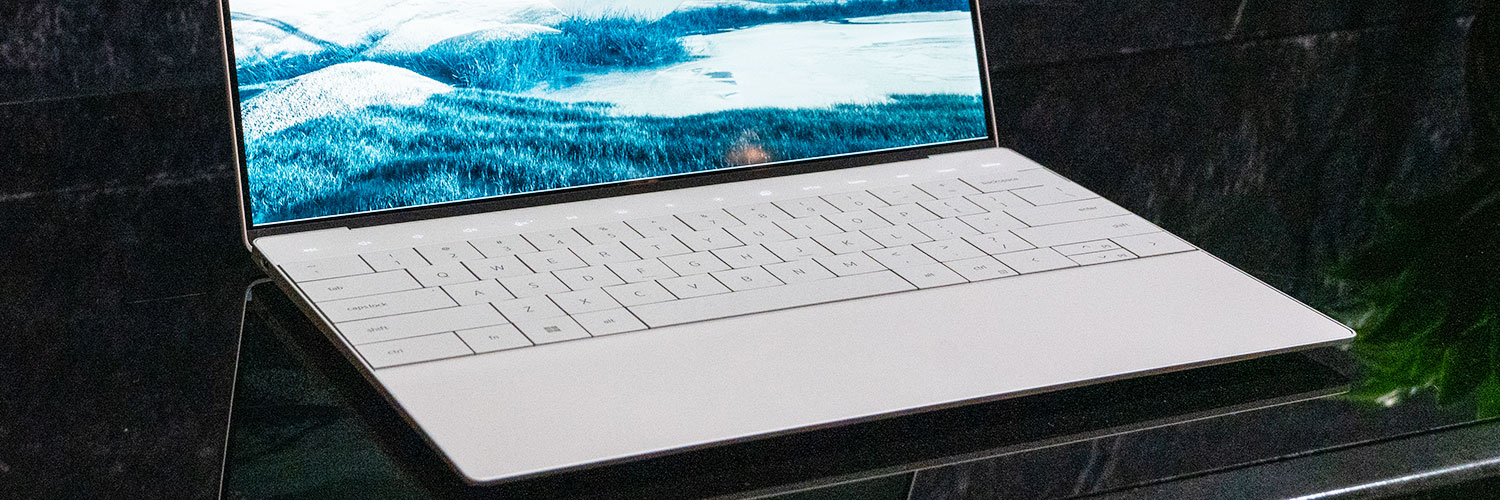
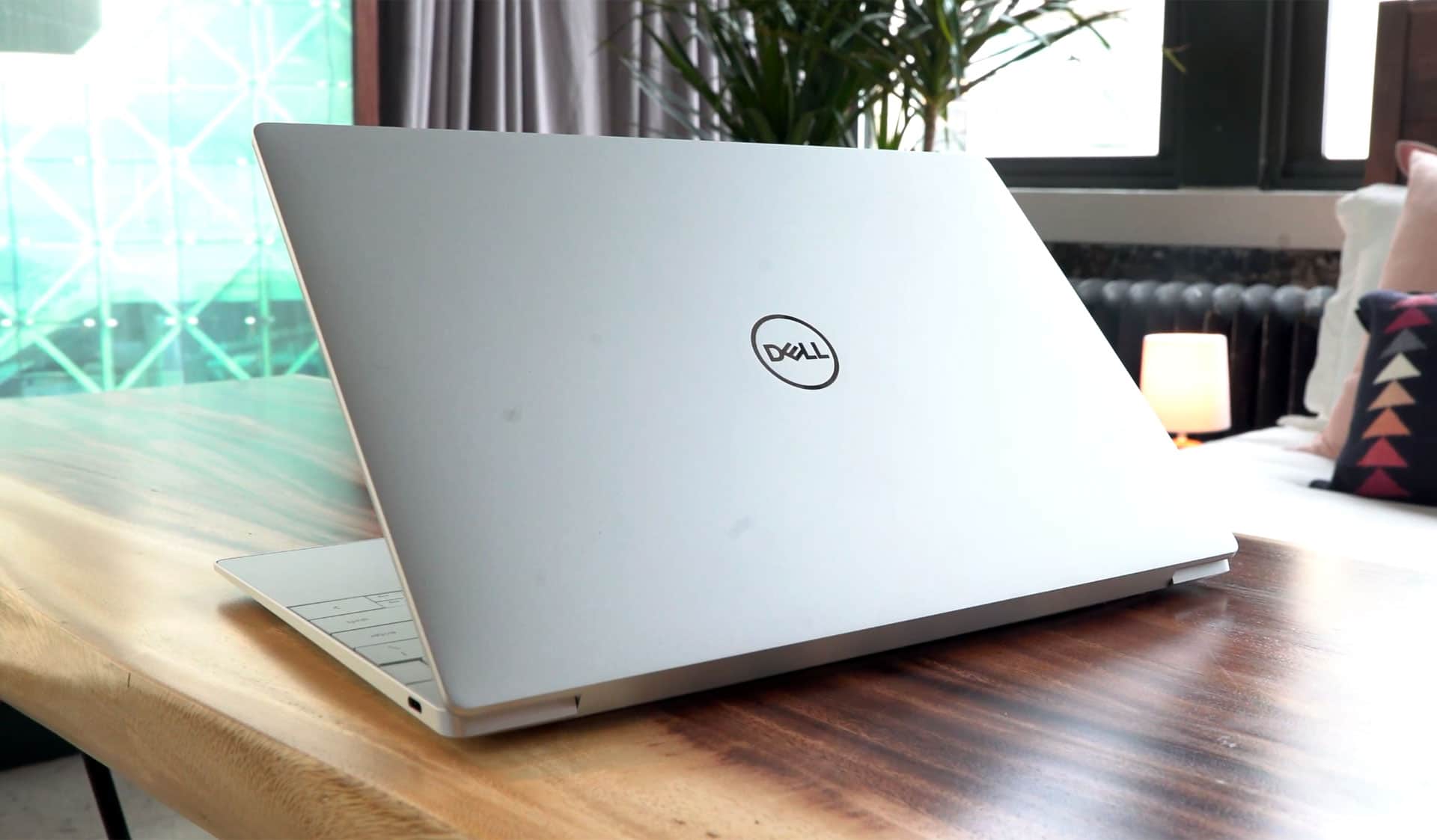
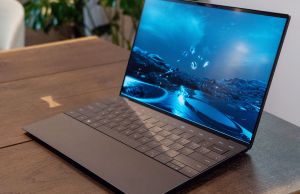
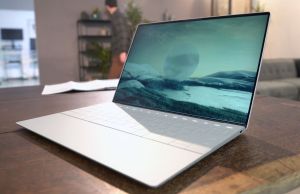
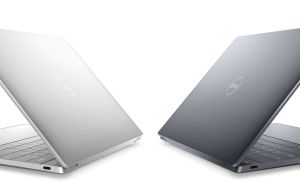
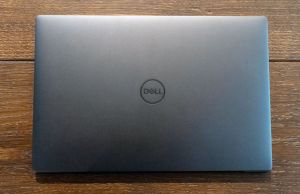

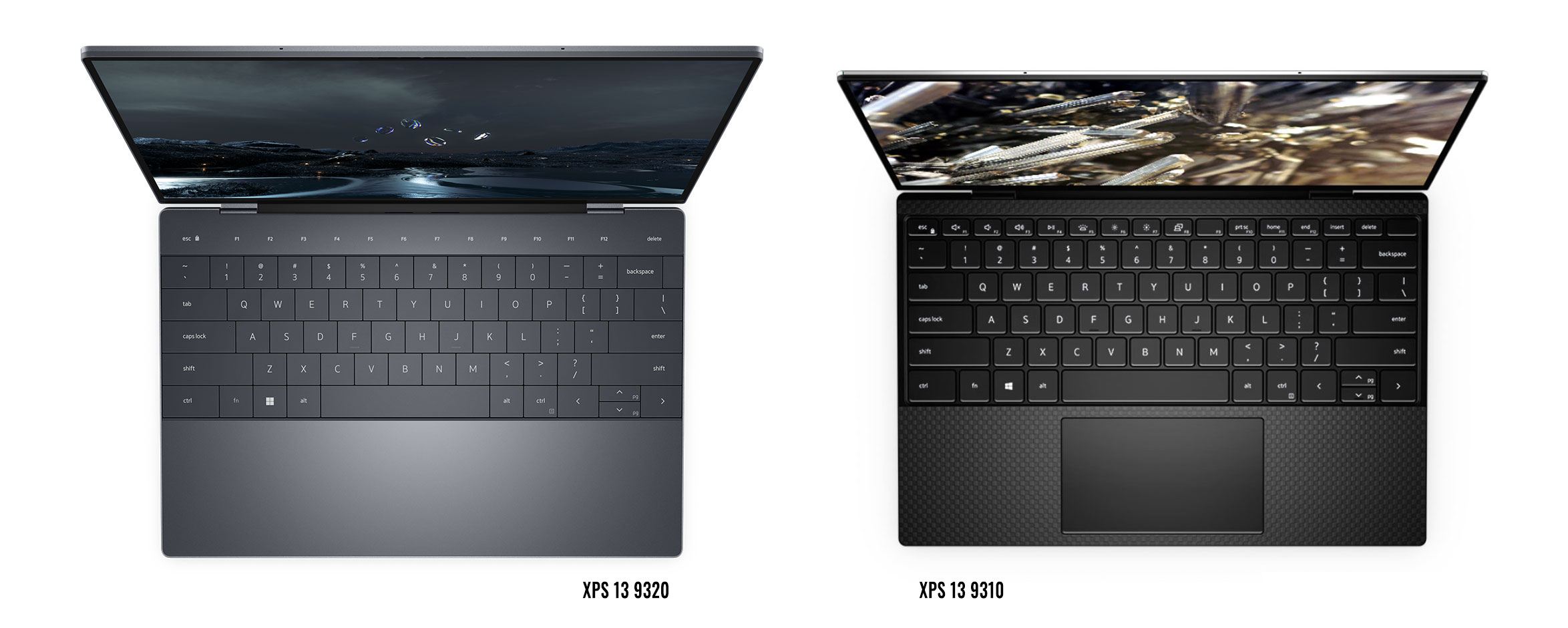
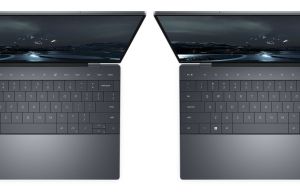
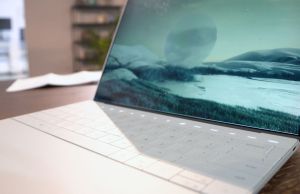
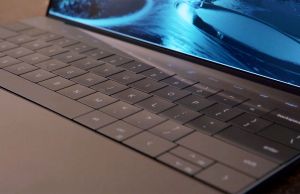

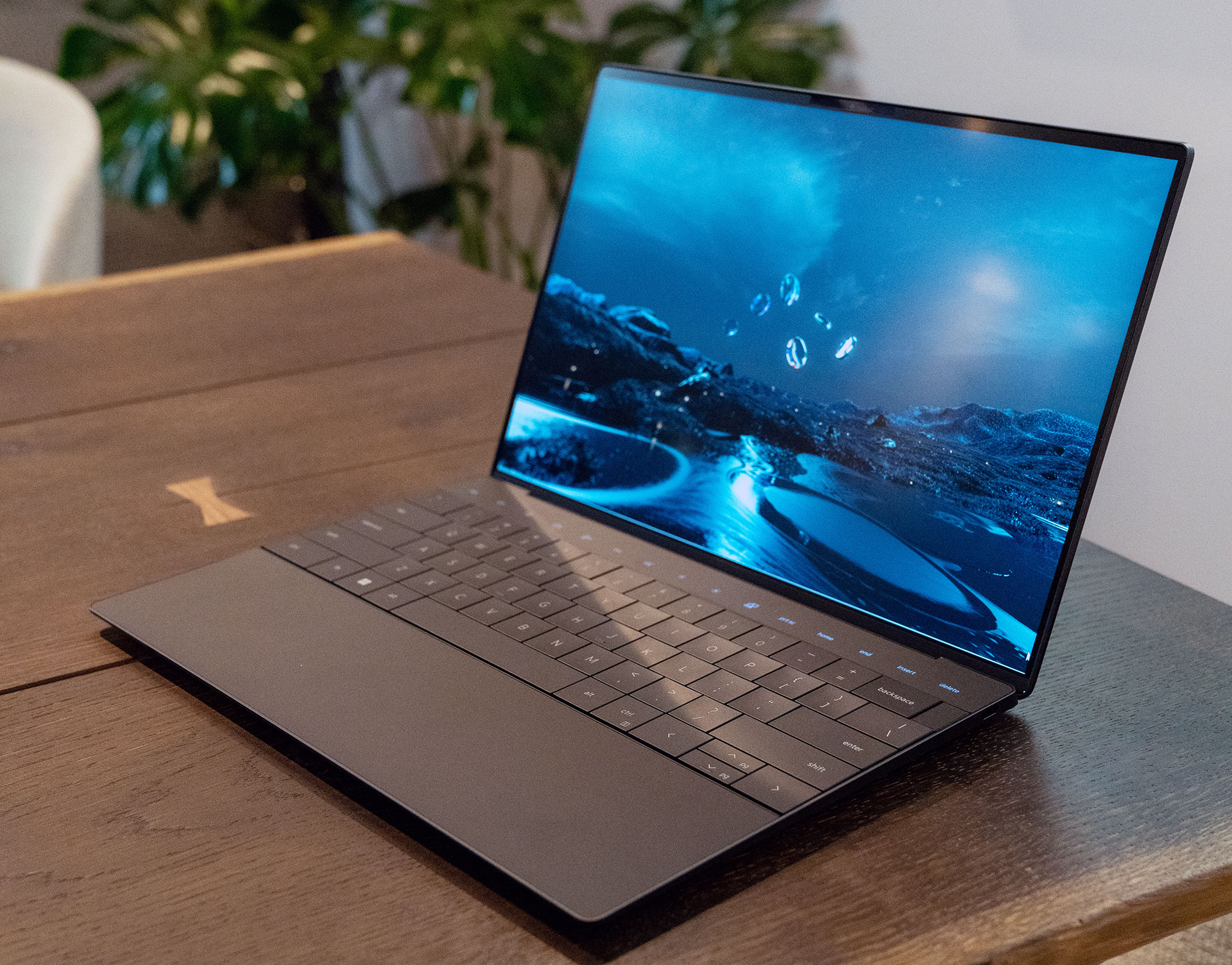

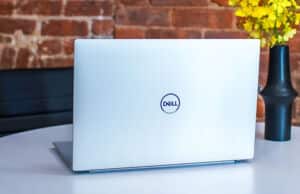
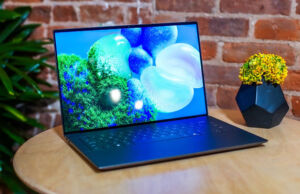
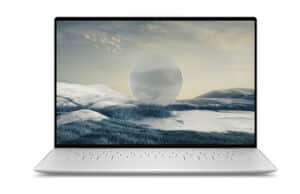
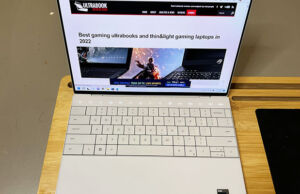

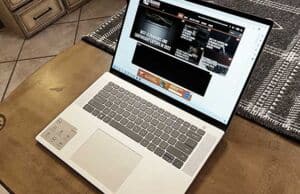




Aurelio
January 5, 2022 at 3:27 am
Hello, and thanks for all the information and your hard work. :-)
Well, to be honest… I don't like it. Not that it isn't quite beautiful. But when you spec this the right way it will (probably… and still…) cost you upwards of US$2000 or even more. Frankly, there are better options for this kind of money.
But, truth be told, I've been not liking the XPS series (specially the 13) for a long time; in the past, it used to be one of the best performance notebooks (and you paid a hefty price for it), but for many years that has not been the case anymore; maybe in the 15 and 17 series it kept the performance, but I've long lost interest in those lines in light of the better competition.
In my opinion, nowadays, the price/performance ratio in this series is just horrible.
You pay for the build quality, great screen, great looks, but, other than that, inside the box, you don't get too much for your money; and what I really mean by that is that you'll find much better specs elsewhere for the same kind of money (many times even less money).
About the (lack of) ports, I definitely don't think it will be a problem. The kind of user that buys these machines probably already have a good (if not great) pair of Bluetooth headsets (their phones already dumped the 3.5mm port a few generations ago). About the card reader, let's be honest here: it is very likely that this user will have (or buy a brand new) multiport usb-c hub with that; or a Thunderbolt 4 dockstation… (or both). In fact, I can't even imagine someone buying this machine and not having a decent hub to go with it (not that they are obligated to use it all the time).
About the other changes, it reminded me of a (even more futuristic) Microsoft Surface; some people will "dig" the new look immensely and probably buy the machine just for that; on others it will probably have the opposite effect.
In a certain way (and I recognize I may be wrong about that), I see this notebook as kind of a "niche" product anyway, so Dell won't mind if it sells a little less (I think).
Andrei Girbea
January 5, 2022 at 9:20 am
As you'r[e saying, you're paying a premium for the craftsmanship, screens, format, etc. I'll have to spend time with it to draw a conclusion. It sure it different, but I would have preferred it with standard inputs
Geraldine A. DeVane
January 8, 2022 at 7:43 pm
I bought a Dell XPS from BestBuy last year..found out later it had 3 platforms. My bank account was hacked. I was getting 3+ duplicate emails. My IT person installed PC Admin to solve problem. I just started getting duplicate emails again. Can u delete PC Admin to solve proble? Or should I get a new computer directly from Dell?
Nate
January 6, 2022 at 5:57 am
Looking at the specs and feature deletions, I think I'd rather pick up a 32gb RAM 9310 on sale or refurbed and still get to enjoy my headphone jack, not have to deal with the new keyboard and touch F-keys, and not have to upgrade my existing stash of 45w Usb-c power supplies.
Although I'm still not sure what I will do about my beloved Logitech wireless mouse. Bluetooth mice just don't work well for me and I want to leave the dongle plugged in all of the time without it wrenching out my motherboard on the bag. How they haven't come up with a flush mount usb-c mouse/universal receiver yet drives me crazy and all of these laptops without a single fallback usb3.1/a port keep me from pulling the trigger on an upgrade from my 9360.
LCuster
April 30, 2022 at 7:40 pm
I also have Dell xps 13 (9630) that I was considering upgrading, but waiting in hopes the 2022 would have a better keyboard – ie more like my work thinkpad yoga x390. I really love my thinkpad keyboard and I'm not wild about the 9360 keyboard. New 9320 keyboard sounds worst. I also like to keep my logitech receiver in one of laptop USB ports and with the new 9320 seems that is not possible. Yes, I would purchase a new Thunderbolt 3 dock with 100W power, but I don't want to lug that and it's power supply around.
This all just makes me consider shelling out the $$ for the thinkpad x1.
Eric
January 7, 2022 at 12:27 am
Apologies in advance for a sort of double post (sent a longer version of this question on a different article).
I'm considering the Dell XPS 13 but am really leaning towards an LG Gram 16. Do you have any sense as to if/when LG will refresh the Gram line in 2022? Wondering if it's worth the wait for potentially better battery life with the Alder Lake processers or maybe some upgraded speakers or webcam.
Thanks!
GerryO
March 14, 2022 at 1:53 am
"About the (lack of) ports, I definitely don't think it will be a problem. The kind of user that buys these machines probably already have a good (if not great) pair of Bluetooth headsets (their phones already dumped the 3.5mm port a few generations ago). About the card reader, let's be honest here: it is very likely that this user will have (or buy a brand new) multiport usb-c hub with that; or a Thunderbolt 4 dockstation… (or both). In fact, I can't even imagine someone buying this machine and not having a decent hub to go with it (not that they are obligated to use it all the time)."
Only a sucker would fall for any of that industry marketing bullcrap. Yeah, as if consumers were complaining that there were too ports and they have no use for headphone jacks. And while you're at, drop the HDMI port, too, and don't forget to raise the price because we love paying more for less. So much for "objectivity." This site has lost all credibility.
Andrei Girbea
March 14, 2022 at 10:33 am
Gerry, that is a user comment and opinion, not mine. Please respect others and don't throw out false accusations.
Brian Howard
May 11, 2022 at 3:46 pm
GerryO – When you say "there were too ports" do you mean there were '2 ports' OR 'there were too many ports'??
Ollie
March 31, 2022 at 8:31 pm
Hey Andrei,
Just a friendly suggestion. When you update an article, put it at the very end. That way it would be easier to find out what exactly has been updated. Or at the very least, underline the new paragraph. :) That way people wouldn't have to wonder :-)
Andrei Girbea
March 31, 2022 at 8:53 pm
Thanks, noted. If it's a significant update, I document it in the article's intro. If it's just some minor change or correction (as in this case), I just do it in the article without any annotation.
Ollie
March 31, 2022 at 9:18 pm
Ah, got it. Then you're doing everything right, so please ignore my suggestion!
Just curious, what's the update on this one? I'm considering buying this laptop when it comes out. The article says it's supposed to be released during Q1, but that didn't happen.
Also, are you planning on reviewing the new Samsung Galaxy Book 2 Pro?
Andrei Girbea
April 1, 2022 at 11:30 am
Idk about the Book Pro. It's not available in this part of the world and our access to US-focused products is a bit more limited
Aurelio
April 2, 2022 at 7:05 pm
Hello, Andrei,
I am enchanted with the new Gen7 Yoga (Yoga 9 14IAP7). For fans of the XPS series, this (maybe?) looks like a serious contender.
lenovo.com/us/en/p/laptops/yoga/yoga-2-in-1-series/yoga-9i-gen-7-14-inch-intel/len101y0011
I know you probably have an incredibly busy schedule in the few next months, but I wonder if there is any chance of you getting your hands on one of these new Yoga with the 12th gen Intel 1260P processor in the near future (even if it takes many months).
From the few benchmarks that I could see, the 1260P easily outscores an 11400H for instance. It sure looks like a very energy-efficient processor with very good single-core performance and respectable multi-core figures also. I am very excited to see where this leads…
The only "bad" thing I could see in this machine is the limited non-upgradeable amount of memory (8Gb); but with DDR5 prices on the level that we can see right now it is understandable. I could also criticize the lack of Ethernet and HDMI ports, but with USB hubs/dock station it is not really a problem.
Love the Gen2 USB (finally!), 6E WiFi, Gen4 SSD, lightweight, full-aluminium case, 16:10 display, FP reader, big glass touchpad, included e-Pen, great 75Wh battery with rapid-charge, USB-C Slim power adapter, FHD webcam, 4-speaker system, super-round design, etc. (So MANY things to love!)
The entry model (IPS screen) is still a little expensive, but not exorbitant in price like most of these 12th gen Intel laptops. From what I could see, surprisingly it did not get any more expensive than the 11th gen models.
Andrei Girbea
April 4, 2022 at 8:05 am
Yes, Derek's doing this in the next few week
Aurelio
April 4, 2022 at 11:37 pm
Oh, That's great news! Thank you!
(can you tell us in advance if it will be the one with IPS screen?)
I hope he will also be able to test (and include in the article) the "Lenovo Precision Pen 2" that comes with this Yoga 9.
I have high hopes both for performance and battery life on this model (specially the one with IPS screen), but, more realistically, I should just calm down and reign in my expectations… :-D
Andrei Girbea
April 5, 2022 at 10:25 am
I think it's the OLED
Aurelio
April 7, 2022 at 5:22 pm
Oh, well, even if it is the (more expensive) OLED version, I am still very excited about this coming review.
I was just looking today at Geekbench:
browser.geekbench.com/v5/cpu/compare/14149165?baseline=14124542
If this "little" Yoga with a 1260P can beat a XPS 15 with a 11800H so bad (maybe it's a fluke?), I wonder what this will do to the laptop market (for older models) once all these results start coming out.
I also wonder if there will be so much price gauging by the manufacturers by the end of the year… I did a compilation of 11th and 12th gen Intel Mobile Processors on ARK and there you can clearly see that the U-Series price have stayed exactly the same for 12th gen and for H-Series it was raised about $60 "only". Even with another $50 to $100 for DDR5 and still we can't explain the $400 raises on some lines of laptops…
Acer just published the new 12th gen versions of the Swift 3 line, and it is the same price for last year i7-1165G7 against a brand new i7-1260P ($999.99). The same is more or less true for the rest of the lineup (safe for a $50 discount on some models).
http://www.acer.com/ac/en/US/content/compare/NX.ABNAA.001-NX.K0FAA.004
Carl
April 21, 2022 at 9:52 am
I bought the last generation XPS13 just under a year ago due to Apples changover to the M1 CPU and have been using it daily every since. My apps dont work on the M1 CPU. My other work laptops have been almost 100% Lenovo based for the past 10 years.
I feel the critics got it wrong with the 2021 XPS 13, it has fatal flaws. The CPU is slow and power-hungry, the GPU is slow and combined with that, the 4k screeen just empties the battery like crazy.
I have a hunch that many of the reviewers took the laptop on face value and did not give the laptop an extended test, using it daily and weighted their reviews more towards the build quality and easthetic design, which is undoubtably nice.
Whether the XPS13 can beat other laptops in CPU benchmarks (like-for-like with the new generation intel) is going to be secondary to battery life this time around, for me anyway. If there is any hint that the XP13 battery is weak, I will be looking at other options.
Andrei Girbea
April 21, 2022 at 9:58 am
"The CPU is slow and power-hungry, the GPU is slow and combined with that, the 4k screen just empties the battery like crazy."
I understand the screen argument and agree with it, but I don't necessarily agree with the CPU/GPU being slow . Slow for what? And compared to what? Sure, a Ryzen 7 6800U platform would be awesome in this chassis, but Intel are still the preferred choice in many of the premium designs, and their hardware is still fine for the daily chores and multitasking I'd expect most to want to run on a 13-inch laptop. 12th gen Core P is an upgrade in terms of raw CPU performance, but from what we're seeing right now, battery life is going to be problematic.
Carl
May 11, 2022 at 4:20 pm
Hi Andrei, sorry for the slow response. A bit of context, I have had a whole bunch of laptops, including the enormous Alienware 17s as well as Apple kit. For some reason, this XPS13's Intel GPU really struggles with 2D dual screen work, its not great at all, its actually slower than a 4 year old Macbook Pro 13. I really want Dell to succeed here and will keep an eye on the new 2022/2023 models but to say the 2021 model is a dissapointment would be an understatement.
Ron
May 4, 2022 at 4:11 pm
What a disappointment. I've been waiting for the 12-gen laptops, hoping to see some EVO models that have it all.
Instead, we get this experiment as the first (13") model… now I need to continue and wait for the other more traditional models.
I keep looking on Dell website, hoping to wake up from the dream and see that they actually added some ports, including headphones, which I use all day and have no plans to move to wireless for an 8 hours a day usage.
Andrei Girbea
May 4, 2022 at 4:42 pm
tbh, I was also hoping they'd update the previous XPS 13 design to 12-th gen specs, but it looks like they're not, at least for now.
Radek
October 19, 2022 at 10:44 am
Hi, having reviewed this one and asus space edition, which one would you recommend for remote work (mostly plugged in), MS Office, text editing etc. + entertainment (movies, not gaming); I like the looks, more ports about Asus, 90hz screen though worried about the graininess you described, H vs P processor; premium build and looks is what matters to me a lot, as both are more then enough powerful machines for my type of work.
Andrei Girbea
October 19, 2022 at 10:47 am
Read my reply to your comment in the ZenBook article.